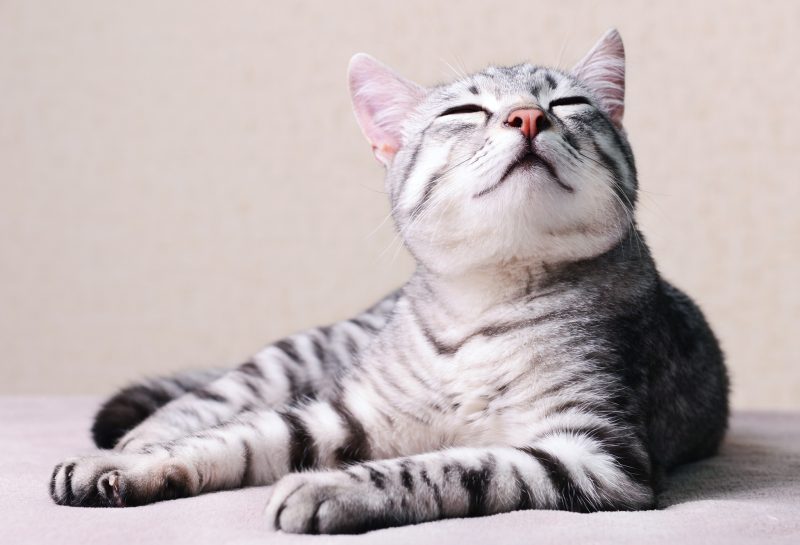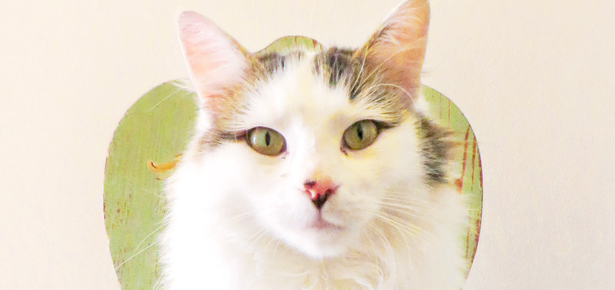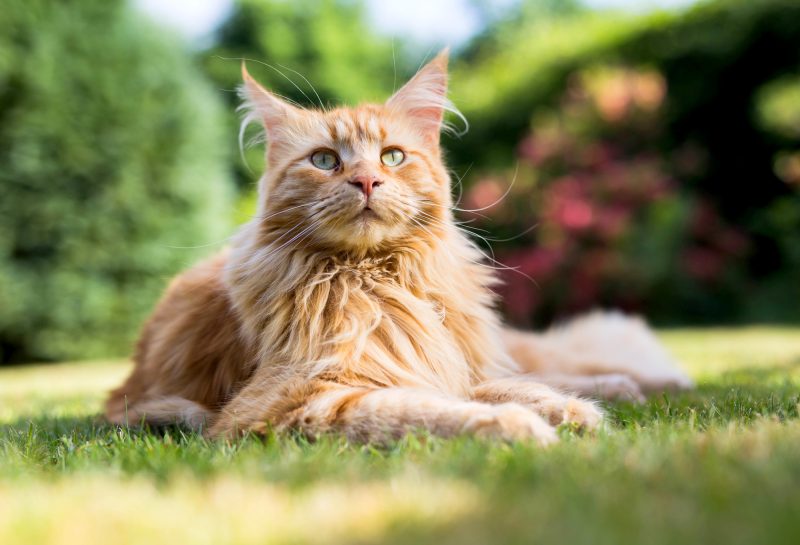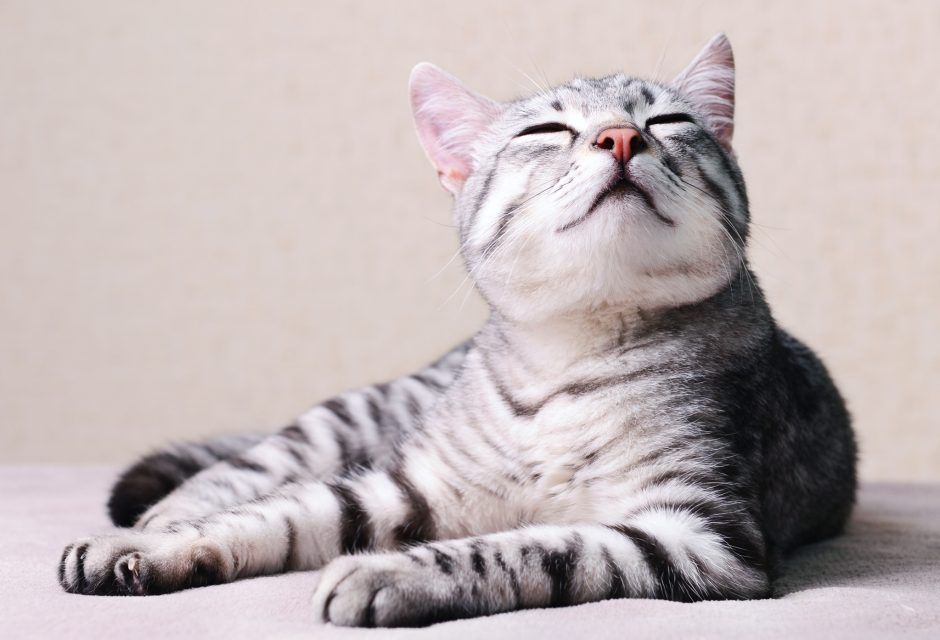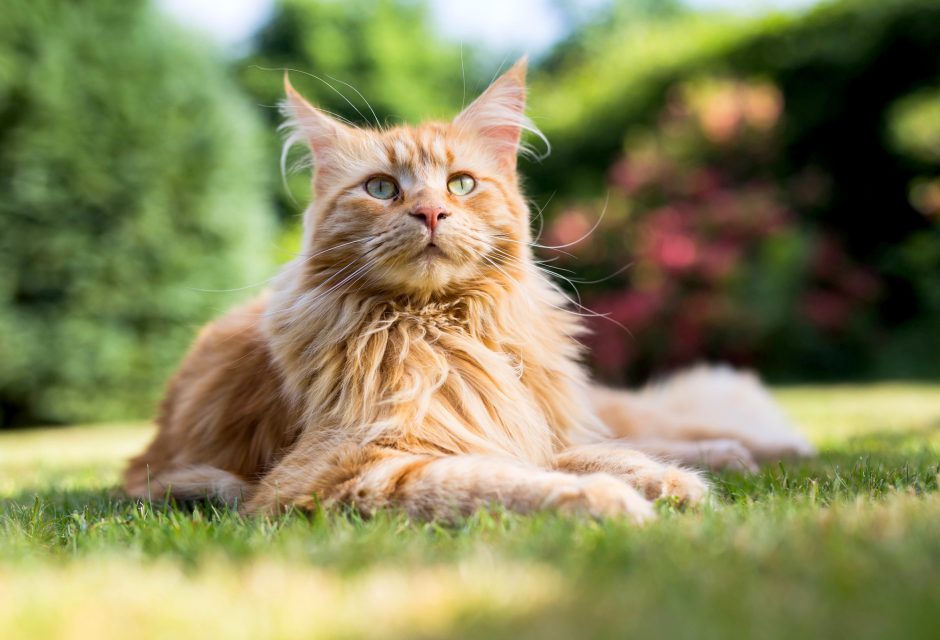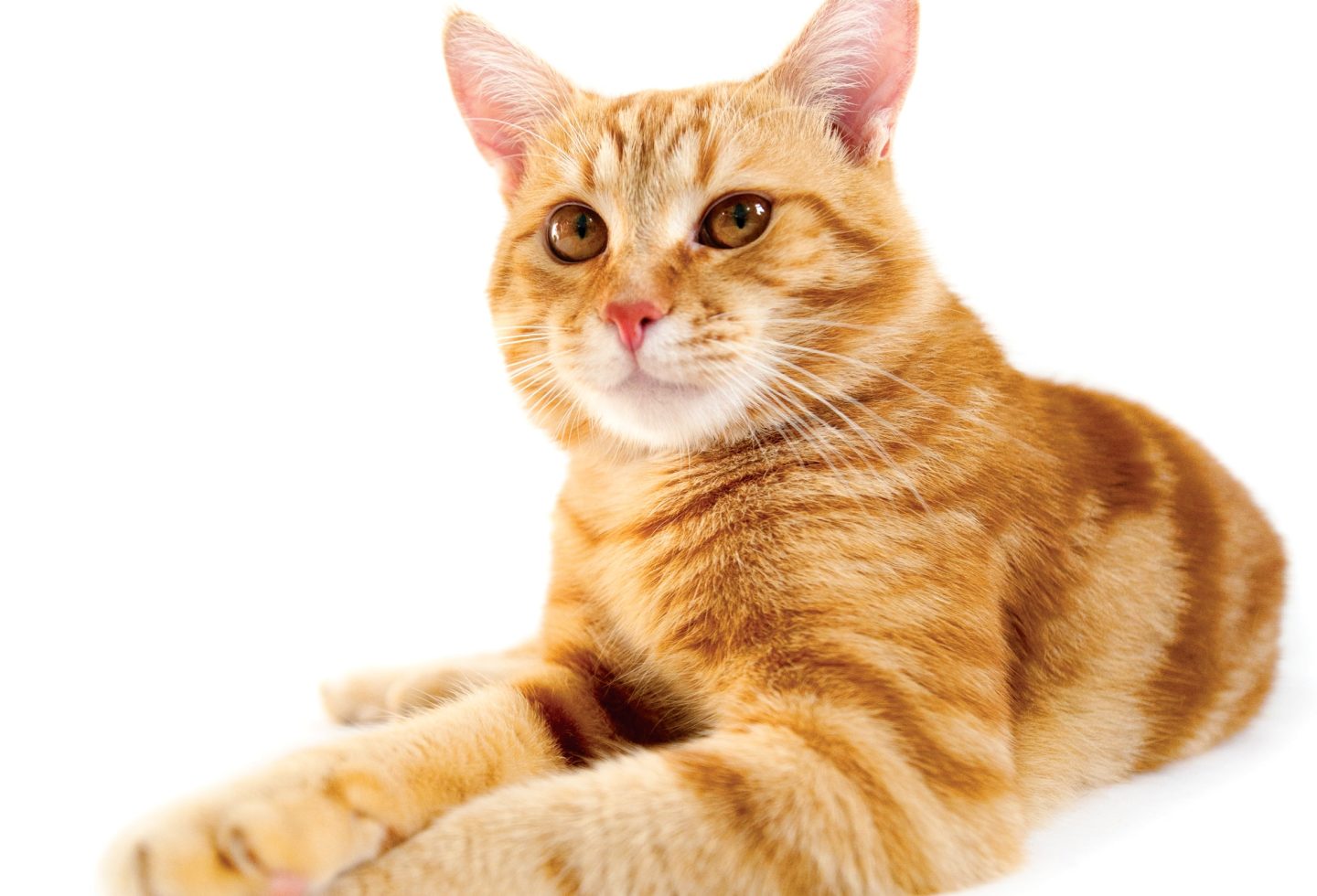
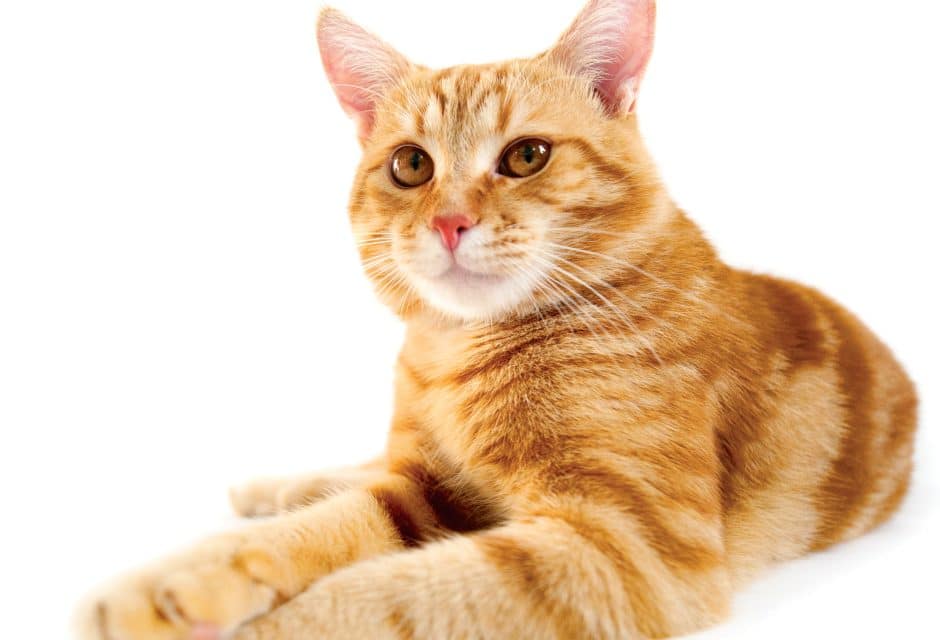
10 Fascinating Orange Cat Facts You Probably Didn’t Know
Discover these 10 surprising facts about orange tabby cats!
There’s lots to love about orange cats, from their chatty disposition to their unique markings. Read on for what makes orange cats unique!
1. If Your Cat is Orange, It’s a Tabby.
All orange cats are tabbies (though not all tabbies are orange). Many people mistakenly believe that “tabby” is a specific breed when in fact, it is a reference to the unique coat markings all tabby cats have. The word “tabby” originates from a striped silk made in Iraq.
2. Look for the “M.”
All orange cats sport an “M” on their forehead. Though various legends attribute the “M” to everyone from the Virgin Mary to Mohammed, the real, science-backed explanation is in their DNA. The trademark “M” marking is caused by the same gene that gives orange cats their tabby pattern.
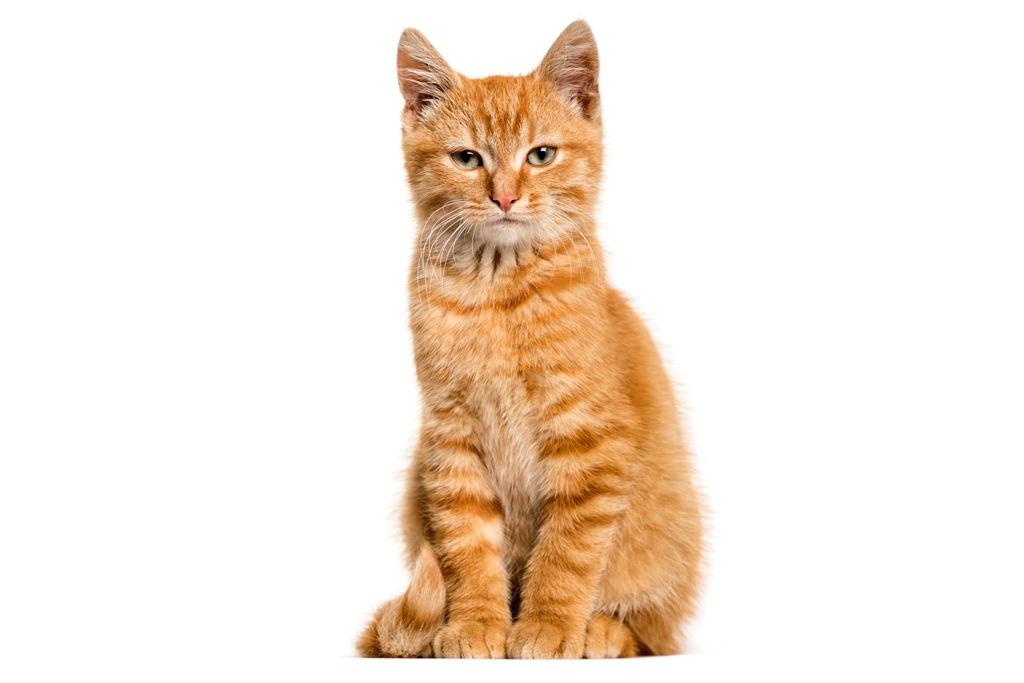
Life on White/Bigstock
3. Orange Cats Are Almost Always Male.
Four out of five orange tabby cats are born male—a whopping 80 percent of orange kittens will be boys. Why? The marmalade colour comes from a sex-linked gene, with the X chromosome being responsible for the orange coloured fur.
Because females have two X chromosomes, females need the gene for orange fur to occur twice in both of their X genes. Males, on the other hand, have the XY chromosome, so they only need their one X gene to have the marker for orange colouring.
4. Orange Cats are Chatty Cathy’s.
Orange cats are known to be talkers. According to Gary Weitzman, head veterinarian at the San Diego Humane Society, cat personalities are tied to coat colour—and orange cats are far and away the most talkative of the bunch!
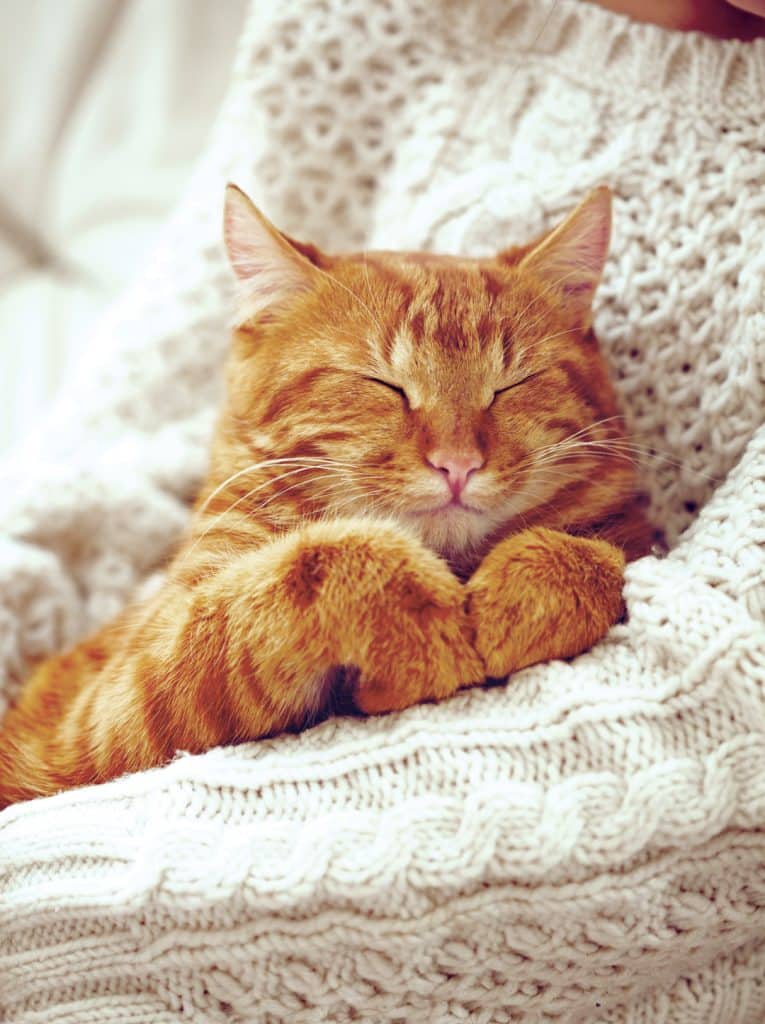
alenkasm/bigstock
5. Trademark Black Freckles
Many orange cats have dark freckles around their nose and/or gums. This is caused by a genetic condition caused lentigo, which is common in calico and tortoiseshell cats. Lentigo increases in the number of pigment-producing cells, causing the freckles. Lentigo is not cause for worry in and of itself, though if you notice any changes, speak with your vet.
6. Orange Cats Have Something in Common with Your Red-Headed Friends.
A specific pigment called pheomelanin causes the orange coat colour. This is the same pigment that causes red hair in humans.
7. Velcro Cat Reputation of Orange Cats
While there’s no scientific studies to back this, orange cats are thought to be friendlier and more affectionate than other cats. This could be because 80% of orange cats are male, and male cats tend to be more social and affectionate with both humans and other cats.
8. Types of Stripes.
There are no cats with solid-coloured orange coats. All tabby cats, including those that are orange, have a patterned coat caused by the agouti gene. This gene results in one of four possible tabby patterns: mackerel (tiger stripes), ticked (fur with alternating light and dark stripes), spotted, and classic (a swirled pattern).
9. Bigger Than Your Average Cat.
Marmalade cats tend to be slightly larger and taller than other cats. This is likely because most orange cats are males.
10. Easy-going Snugglers.
Though all ginger cats have individual personalities, consensus says these cats like to relax. Easy-going and laid-back, orange cats are perfect snuggle buddies.
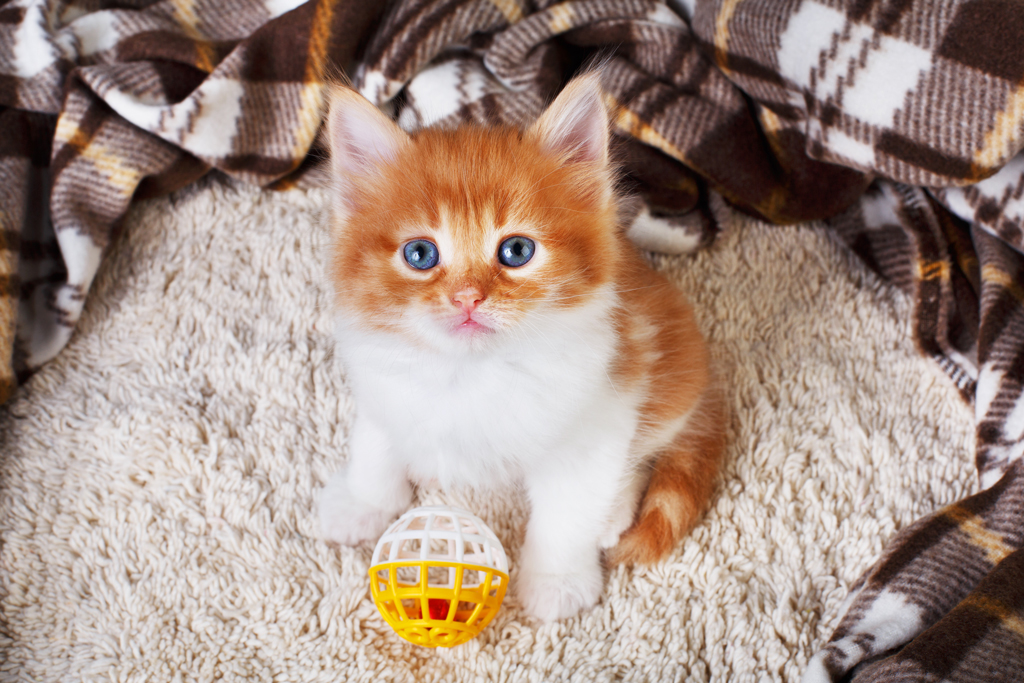
Prostock studio/Bigstock
Want More? Everything You Ever Wanted to Know About Orange Cats
Orange cats, particularly those with the tabby coat pattern, are often known for their friendly, outgoing, and affectionate personalities. While each cat is an individual, many orange cats tend to share some common traits that contribute to their lovable reputations. Here are some personality traits commonly associated with orange cats:
Orange Cat Personality Traits: Playful, Loyal, and More
- Affectionate
Orange cats are often described as cuddly and affectionate. They tend to enjoy being around their human family members and may seek out attention, whether it’s sitting on your lap, curling up next to you, or following you around the house. Many orange cats are known for being particularly sociable, enjoying human company, and forming strong bonds with their owners.
- Playful and Energetic
Orange cats, especially as kittens, are often full of energy and love to play. They enjoy interactive toys, climbing, and exploring their environment. Even as adults, many orange cats retain a playful streak, engaging in games like fetch, or simply chasing after toys. This playful nature makes them fun companions and helps keep them active and stimulated.
- Curious
Like many cats, orange tabbies tend to be curious by nature. They will often investigate new surroundings, seek out interesting objects, and explore every nook and cranny of their environment. This curiosity can make them seem a little mischievous at times, as they may get into things they’re not supposed to, but it also means they are mentally engaged and love discovering new things.
- Outgoing
Orange cats are often described as social butterflies. They tend to be more open to meeting new people and getting along with other pets compared to other cats. They are usually not as shy or reserved, making them great pets for families, especially those with young children or other animals. Their outgoing nature means they typically adapt well to various living situations.
- Affectionate with Other Pets
In addition to being affectionate with humans, many orange cats are also good with other pets, such as dogs and other cats. Their friendly and social nature often makes it easier for them to integrate into multi-pet households, and they may even form close bonds with other animals.
- Relaxed and Easygoing
While orange cats are playful and energetic, many are also known for their easygoing temperament. They tend to be less territorial and more relaxed than some other breeds, enjoying a calm, cozy environment. They can often go with the flow, whether it’s a change in routine, a new pet, or a move to a new home.
- Mischievous but Not Aggressive
Orange cats are often a little more mischievous and curious than other cats, which can sometimes lead them to get into trouble. However, they are generally not known to be aggressive. Instead of using claws or biting, they might try to “help” with whatever you’re doing—sometimes in ways that make you laugh or shake your head.
- Affectionate with Their Owners
One of the standout traits of orange cats is their strong attachment to their owners. They are often seen as “people cats” who enjoy being the center of attention and will follow their owners around the house, waiting for cuddles or a good play session. They tend to bond closely with the humans they live with, offering affection in return for attention and love.
While every cat is unique, orange cats are generally known for their playful, affectionate, and social nature. Their friendly personalities, love for companionship, and curious behavior make them wonderful pets, especially for families or individuals looking for a cat that enjoys both affection and fun. If you’re considering adopting an orange cat, you’re likely to find a loyal, loving companion with a playful spirit and a knack for making you smile.
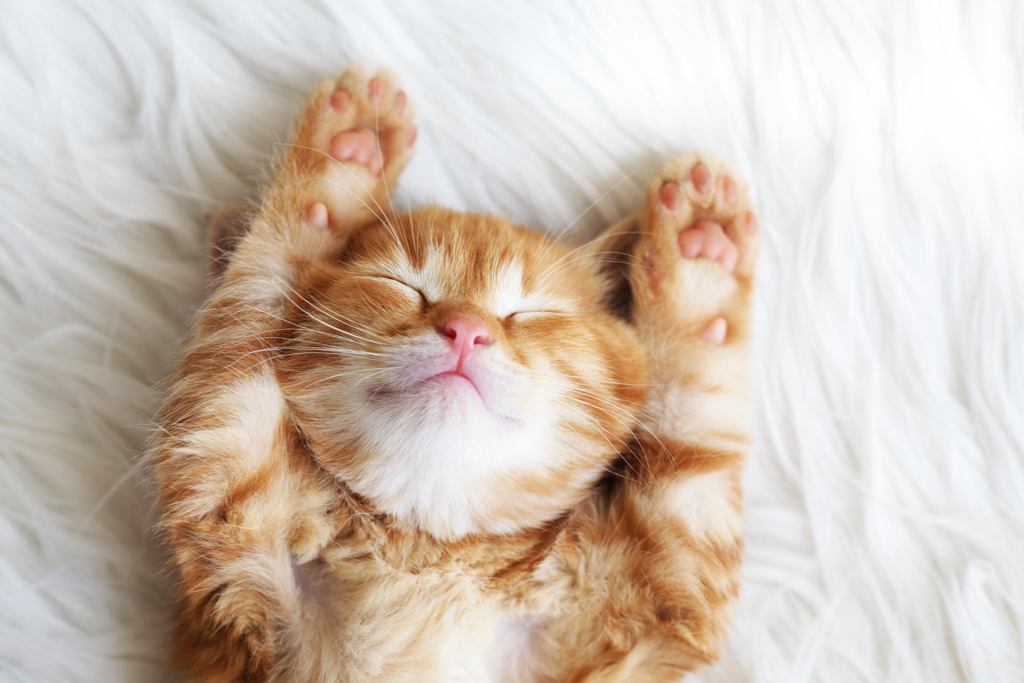
alenkasm/Bigstock
The Science Behind the Lovable Orange Cat Personality
The lovable personality of orange cats, particularly orange tabbies, has sparked curiosity and led to various theories, but the science behind their temperament is a mix of genetics, biology, and environmental factors. While there’s no definitive proof that all orange cats have the same personality traits, there are several factors that may contribute to their generally charming and affectionate demeanor.
Genetics and the Orange Coat
The vibrant orange coat of these cats is determined by a gene called O (orange), which is sex-linked and carried on the X chromosome. This gene produces the orange colour by affecting pigment production, but it also seems to have some influence on the cat’s behaviour. While the exact mechanism is still under study, some researchers suggest that the same genes influencing their coat colour might also play a role in their more sociable, outgoing nature.
Male Dominance in Orange Cats
Most orange tabby cats are male, with roughly 80% of orange cats being male. Male cats, in general, tend to be more social and affectionate, especially those that are neutered. This could explain why many orange cats, particularly males, are often described as friendly, cuddly, and easygoing. Female orange tabbies, while less common, can be equally loving but may display different personalities depending on their environment and genetics.
Early Socialization
The environment and early experiences of an orange kitten play a major role in shaping its personality. Cats raised in environments where they receive plenty of positive human interaction, socialization with other animals, and stimulating play tend to develop affectionate personalities. Many owners report that orange tabbies, in particular, are more likely to seek out human companionship, snuggle, and be active participants in family life, which reinforces the perception of them as “people cats.”
Affectionate Nature of Orange Cats
Orange tabbies have earned their reputation for being affectionate and outgoing, and it’s likely a combination of factors—from their genetic predisposition for sociability (especially in males) to the nurturing environments they are often raised in—that makes them seem so lovable. Their playful behaviour, desire for human interaction, and tendency to form strong bonds with their families have made them a favourite among cat lovers.
In short, it’s likely a combination of their genetics, early socialization, and environmental factors that contribute to their reputation for being friendly, affectionate, and playful companions!
Orange Tabby Cats: Facts, Myths, and Fun Tidbits
Orange tabby cats are among the most recognizable and beloved cats, known for their vibrant, orange-colored coats and charming personalities. While the “tabby” label refers to a coat pattern, not a specific breed, orange tabbies are characterized by their warm, orange fur, which can come in various shades, from pale cream to deep, rich orange.
Facts: Orange tabbies are not a breed but a colour pattern. The distinctive orange colour comes from a gene that is sex-linked, meaning most orange tabby cats are male—about 80% of them, in fact. Female orange tabbies are relatively rare and often have a more diluted coat colour. These cats are typically friendly, social, and outgoing, often forming strong bonds with their human families. They are playful and curious but also tend to be affectionate and easygoing.
Myths: One common myth is that all orange tabbies are the same. While they share the same colour, their personalities can vary widely depending on their breed, upbringing, and environment. Another myth is that they are all male, but, as mentioned, female orange tabbies do exist. Additionally, some believe orange tabbies are less intelligent, but in reality, they’re just as smart as any other cat and are often quick to learn tricks or routines.
Fun Tidbits: Famous orange tabbies include the cartoon characters Garfield and the cat from Heathcliff, both of whom embody the fun-loving, mischievous nature of the breed. Their vibrant colour also adds to their popularity in pop culture and social media, where they are often celebrated for their charming, photogenic looks.
Overall, orange tabbies are known for their engaging personalities, playful antics, and striking coats, making them cherished companions in many households.
This article originally appeared in the award-winning Modern Cat magazine. Subscribe today!
Join the newsletter and never miss out on cat content again!
"*" indicates required fields
By clicking the arrow, you agree to our web Terms of Use and Privacy & Cookie Policy. Easy unsubscribe links are provided in every email.





